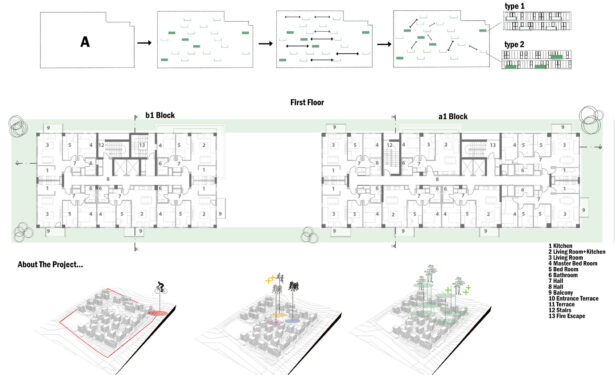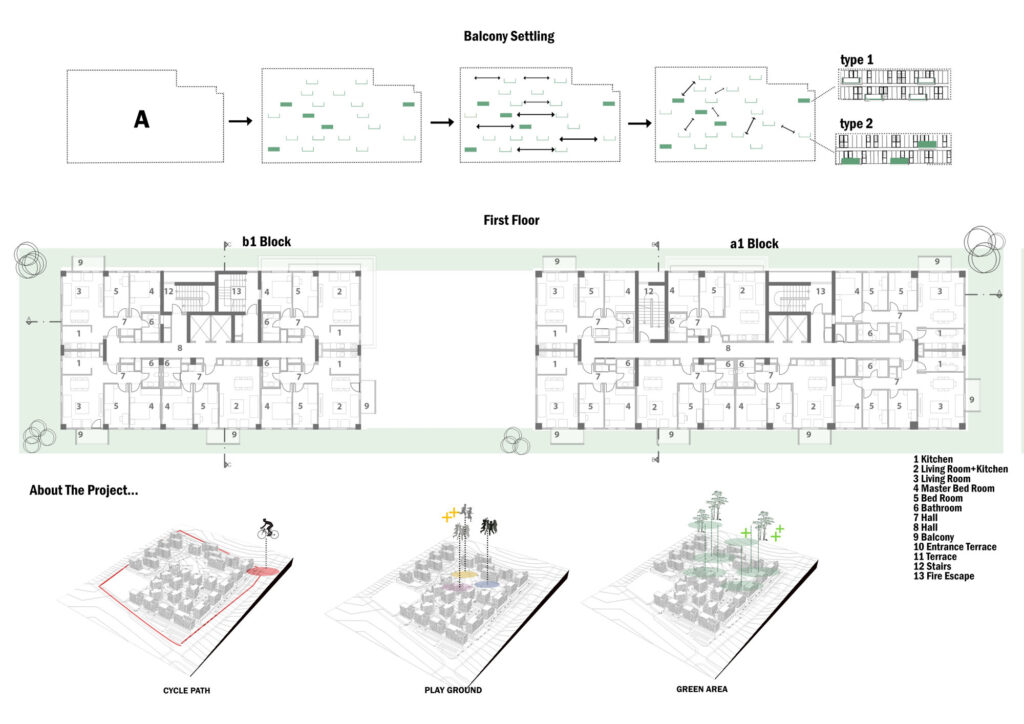- 30 May 2023
- 77 defa okundu.
CAJA by Maxx Royal
Set in one of the idyllic bays in Bodrum, Turkey, CAJA by Maxx Royal, designed by GEO_ID, is a resort of 22 villas with extended stay accommodation.
Nestled in one of the idyllic bays in Bodrum -Turkey, CAJA by Maxx Royal is a resort comprising 22 villas with extended stay ser- vices. Working together for almost a decade, the project has been a unique step forward heralding a new era for both ETS Group and GEO_ID; in collaboration with GEOMIM -as the studio was com- missioned for the architectural design of the project-, a brand new concept is created for Maxx Royal Resorts. The project has been developed in close collaboration with the client from scratch and redefining the concept of holiday village on Bodrum’s Aegean Coast, CAJA grants a homely atmosphere where guests can enjoy the services of a five-star hotel.
SETTLEMENT
Neighbor to the famous Türkbükü bay in Bodrum, Hebil Bay is a relatively quiet, essentialy a residential district with lush green nature that meets crystal clear waters. White-washed villas scat- tered on the hillsides, maquis landscape with olive trees, and fan- tastic views are among the known features of this coastal strip. The design process inevitably started with an appreciation of the existing values and spirit of the place. One of GEOMIM’s primary goals was to design a hotel that not only emphasize and felt connected to the bay but amplify people’s experience of it. To achieve this, villa settlements are set back approx. thirty meters behind the building approach limit leaving wide open commu- nal spaces for the pool and beach use (The entire complex sits on 5.700sqm of the 10.000sqm construction area). Maximizing common areas was crucial as the project’s future phases will also share the same beach and also approach the seaside through pedestrian axes planned in the general layout. Every aspect of the resort experience – the arrival, the lounge, pool and beach, restaurant, fitness, and spa- is clustered around the entrance or by the seaside, leaving the villas zone intimate and tranquil. Imagined as a serene Aegean village, guests are welcomed to experience a new summer holiday that will redefine CAJA for years to come.
VILLAS
The architecture of the villas provides 1+1, 2+1, and 3+1 options. Drawing cues from the style of houses that were popular in Bodrum in the 80s, the aim was to stay in line with the scales and the monolithic expression of the urban identity resulting in a set of buildings infused with nature and semi-open relations. Outdoor living is supported for every unit on the ground and first floors, shaded with wooden canopies. A drone photo may suggest that the project consists of independent blo- cks. Still, every unit is connected to the central underground plinth with technical rooms, carpark, staff rooms, and service connections that enable the efficient operation of the hotel. Located over and around this invisible base, villa units are spatially connected to the service networks. Yet, pro- viding ultimate intimacy for the guests, the service flow never intersects the living areas. The spatial organization of the villas is planned by dividing the living and service areas into two through a transparent circulation volume. This buf- fer zone accommodates a linear staircase and is infused with daylight coming both from the skylight and the windows. Under the stairs, on the ground floor level, an open plan kitchen is located, well connected to both service and living areas. Every room in CAJA villas has outdoor access. Life in ground-foor spaces smoothly continues in gardens while large windows on the first foors open up directly to the terraces and frame the stunning views of the bay.
INTERIORS
Considering the long-term use, the focus on interiors has been achieving a spacious and serene total experience by the use of sustainable and easy maintenance surfaces avoiding bold surfaces and/or objects which can overwhelm the guests over time. Designed by GEO_ID, a simple palette of black, white, and beige brings a “calm atmosphere” to the interiors. White stucco cladding continues into interior spaces, and the boundary between indoors and the shaded patio smoothly dissolves. Blurring the indoor-out- door barrier perfectly fits the summer living rituals. Much of the furnishings are black, contrasting with the white walls and ce- ilings, and beige ceramic surfaces balance the ambient and add warmth to the atmosphere. A light beige palette dominates the textile surfaces and brightens up the interiors. Custom-designed frames decorate the walls and are a playful abstraction of the geometrical language of the project. The black lines framing the rooms also add to the luxurious feel. Open kitchens are central to the design. Functioning as a dynamic mee- ting point, materials here also support the buffer zone idea and perfectly align with spatial planning decisions. The transition from ceramic to wood veneers on steps keeps up with the skylight above. The contrasts together with the minimal language continue in the bedro- oms. The headboards are designed as large pillows, and the lighting ele- ments hanging like an elegant brooch over the beds is custom designed by GEO_ID. Lighting design also avoids a homogeneous brightness and is achieved with pendants and spots placed according to the daily routines of the guests. The studio was also responsible for styling each of the villas and using objects from the region or local suppliers, each unit was styled with slightly different accents.
COMMON AREAS
Visitors enter the 10.000sqm property through a welcoming canopy. The reception hall was designed like a lounge, considering the boutique fa- cility would not have busy hours. A chic study table is selected for the reception desk, and the space is filled with comfortable and cozy seating arrangements enabling beautiful encounters. Organic patterns derived from Bodrum’s textures dominate the entirety of the common spaces. Varying interpretations of this pattern can be seen on the ceilings of fitness and reception, on the walls of the spa, and on the restaurant floors, but with different materials and scales. The relatively small fitness hall has a bright color palette with mirrors inserted in the patterned ceilings and provides a spacious feel oriented towards the garden. Spa -with massage, sauna, and steam room facilities- uses natural stones for holistic rituals. Patters created on travertine walls are matched with lacquer finishes. Resting areas follow the plain lines of the black and white contrast. Inspired by the Aegean outdoor lifestyle, the restaurant has cozy exterior qualities surrounded by nature. Although can be isolated from the exter- nal weather conditions when desired, there are no distinct boundaries between inside-outside spaces. The design team drew inspiration from the local cultural context and leveraged simplistic but elegant languages to integrate the space into nature. Mosaic floors continue seamlessly betwe- en interiors and exteriors, and mirror surfaces in the patterned walls and ceilings reflect the Seaview and the visitors.
LANDSCAPE AND LIGHTING
Central to the Landscape design was the idea of restoration and enrichment of the existing natural con- ditions. Results reflect Mediterranian themes with olive and palm trees, ivy wall and groundcovers, and the use of native plants. Humble garden settings resembling local villages enable intimacy and neigh- borly connections when desired. A lighting scenario that emits less light into the atmosphere was con- sidered, and a plan was made in which living spaces would create a dim atmosphere instead of buildings. SUSTAINABILITY Building exteriors are optimized concerning light transmission, solar gains, and heat loss. The white stucco applications are customized, including small rocks which provide micro shadows and reduce solar gains. Large wooden canopies offer shade, and the windows are set back as part of the climate control systems integrated into the facade design. Green roofs asked by the client create better views for the hillside settlements and contribute to the project’s sustainability goals. Bodrum’s local stone is used in the perimeter walls. Other energy design strategies include seawater utilization in the entirety of the hotel, optimal building orientation, automatically controlled natural ventilation, and rainwater collection for irrigation.






























































































